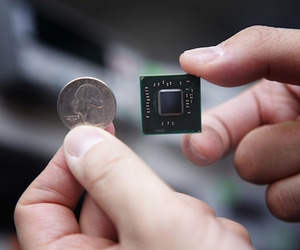 Intel is expected to share details this week about its effort to work wireless capabilities into chips, which could make mobile devices and PCs smaller, cheaper and more power-efficient.
Intel is expected to share details this week about its effort to work wireless capabilities into chips, which could make mobile devices and PCs smaller, cheaper and more power-efficient.
The company will give more details about a dual-core Atom chip code-named Rosepoint, with integrated Wi-Fi capabilities, at the International Solid-State Circuits Conference being held in San Francisco, which started yesterday and runs until Thursday.
The chip is still in research, but the integration of a wireless transceiver into the silicon of the Atom CPUs could help keep ultrabooks with Wi-Fi running for days, said Justin Rattner, chief technology officer at Intel. Chips with integrated Wi-Fi may not be available until the middle of this decade, according to Intel.
Intel has said it wants to integrate Wi-Fi, 3G and 4G radios in future Atom chips, which will be used in netbooks, smartphones and tablets. Early last year, the chip maker completed its acquisition of Infineon Technologies’ wireless division for $1.4 billion, a move that was viewed as Intel’s way to grow in the smartphone and tablet markets.
Intel’s biggest mobile rival is ARM, whose processors are found in most smartphones and tablets. The first Intel Inside smartphones from Motorola and Lenovo are expected later this year, and Intel’s Clover Trail chips will hit Windows 8 tablets later this year.
Chip makers such as Qualcomm are already shipping S4 chips, which are based on the ARM architecture and integrate Wi-Fi and 3G/4G radios, in sample quantities. The S4 chips will be able to run Windows 8 and are targeted at smartphones, tablets and PCs.
The integration of a Wi-Fi transceiver removes an extra communication chip from a device, said Dean McCarron, principal analyst at Mercury Research. Integration allows devices to be smaller, and the removal of an extra chip reduces the cost of manufacturing, McCarron said. That leads to lower prices and savings for buyers on smartphones, tablets and even ultrabooks.
The battery life of a mobile device or PC will depend on how much data is transmitted by the radio, McCarron said. The power consumption grows as more data is transmitted, though integrated Wi-Fi transceivers will be a more power-efficient option than having separate Wi-Fi chips.





